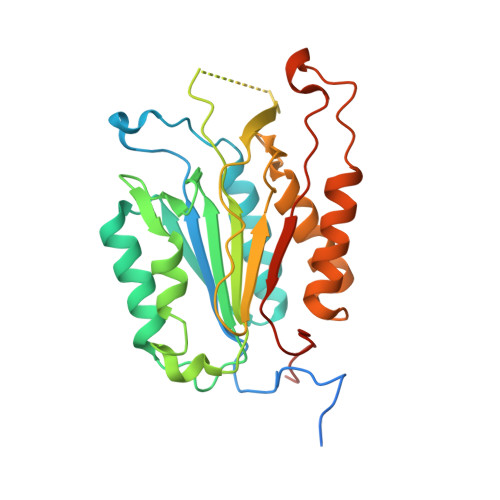Systematic Study of Heteroarene Stacking Using a Congeneric Set of Molecular Glues for Procaspase-6.
Togo, T., Tram, L., Denton, L.G., ElHilali-Pollard, X., Gu, J., Jiang, J., Liu, C., Zhao, Y., Zhao, Y., Zheng, Y., Zheng, Y., Yang, J., Fan, P., Arkin, M.R., Harma, H., Sun, D., Canan, S.S., Wheeler, S.E., Renslo, A.R.(2023) J Med Chem 66: 9784-9796
- PubMed: 37406165
- DOI: https://doi.org/10.1021/acs.jmedchem.3c00590
- Primary Citation of Related Structures:
8F78, 8F96, 8F97, 8F98, 8F99, 8F9A, 8F9B, 8F9C, 8F9D, 8FBV - PubMed Abstract:
Heteroaromatic stacking interactions are important in drug binding, supramolecular chemistry, and materials science, making protein-ligand model systems of these interactions of considerable interest. Here we studied 30 congeneric ligands that each present a distinct heteroarene for stacking between tyrosine residues at the dimer interface of procaspase-6. Complex X-ray crystal structures of 10 analogs showed that stacking geometries were well conserved, while high-accuracy computations showed that heteroarene stacking energy was well correlated with predicted overall ligand binding energies. Empirically determined K D values in this system thus provide a useful measure of heteroarene stacking with tyrosine. Stacking energies are discussed in the context of torsional strain, the number and positioning of heteroatoms, tautomeric state, and coaxial orientation of heteroarene in the stack. Overall, this study provides an extensive data set of empirical and high-level computed binding energies in a versatile new protein-ligand system amenable to studies of other intermolecular interactions.
- Department of Pharmaceutical Chemistry, University of California, 600 16th Street, San Francisco, California 94143, United States.
Organizational Affiliation:

















